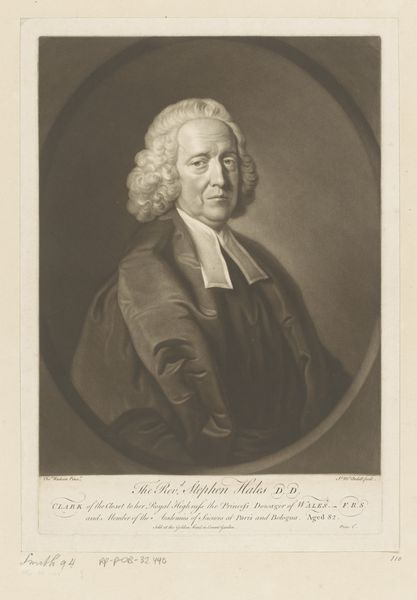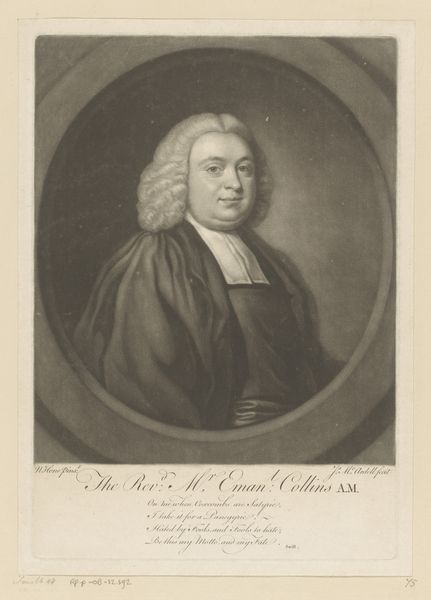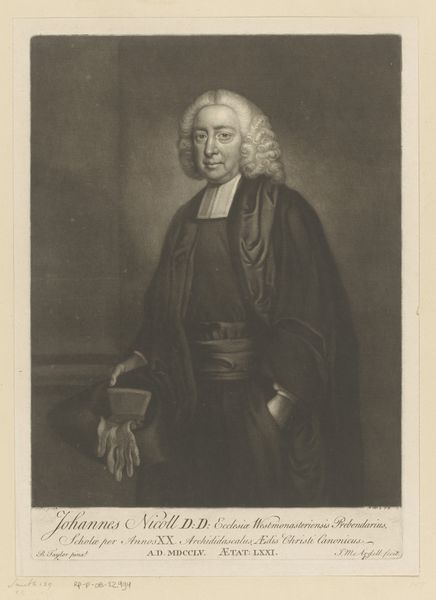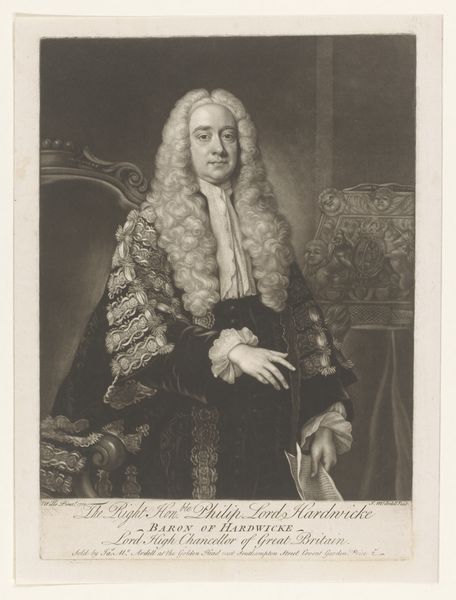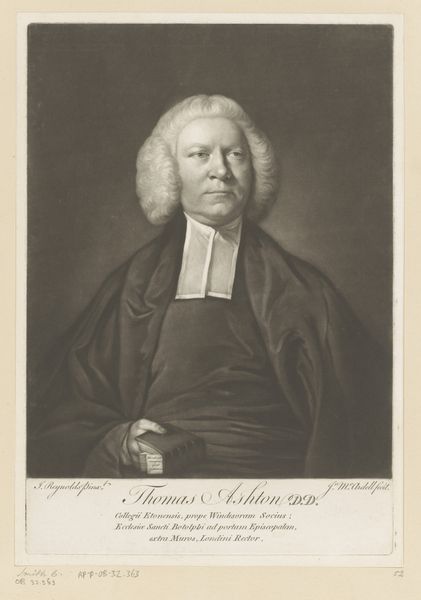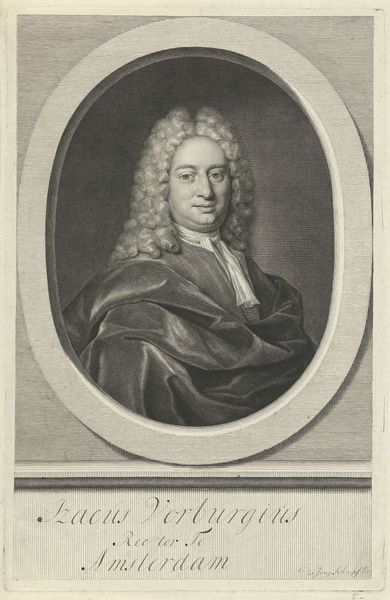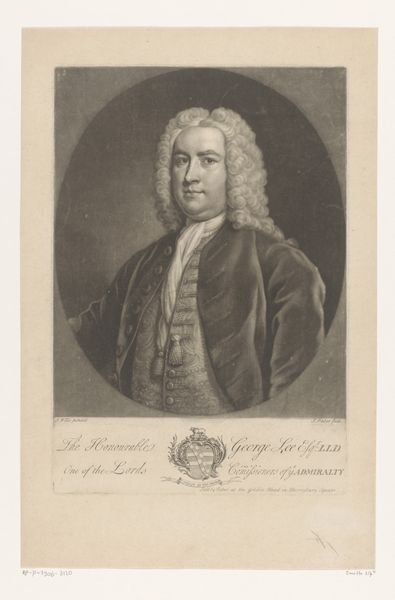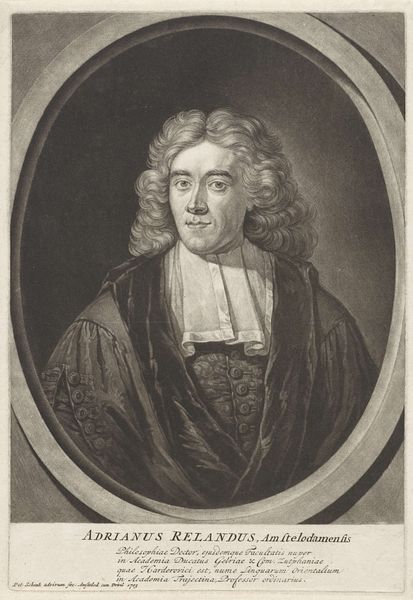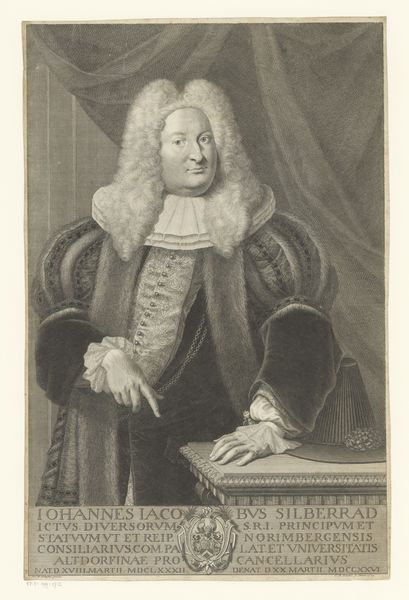
print, engraving
#
portrait
#
baroque
# print
#
history-painting
#
engraving
Dimensions: height 325 mm, width 227 mm
Copyright: Rijks Museum: Open Domain
Curator: Here we see James McArdell's print of William Grant, dating roughly from 1751 to 1753. It's housed here at the Rijksmuseum. The piece exemplifies the baroque style. What strikes you first? Editor: That wig. It's almost a halo. What stories does that elaborate coiffure tell us, beyond mere status? The cascade of curls is echoed in the drape of his robes, creating a sense of visual and social weight. Curator: Exactly! And that visual weight is important, isn’t it? Grant was the Advocate for Scotland. This image, therefore, isn’t just a portrait of an individual; it is a careful construction of power. He's embodying the authority of the Crown. Editor: And notice how McArdell uses the technique of engraving. The light catches his face, making him almost luminescent against that dark backdrop, but also emphasizing that expression—determined, yet composed. It reinforces a particular type of authority. Curator: He is framed within a circle, creating a very controlled visual space. It echoes earlier portraiture traditions, invoking the image of classical busts, for example, while emphasizing Grant’s important social and political role in 18th-century Scotland. The frame isolates Grant’s head, while the inscription on the print anchors his identity. It is both commemorative and declarative. Editor: I'm also drawn to the eyes. Despite the formal attire, there's a very human element present, a certain watchfulness that conveys intellect and possibly, just a hint of…wariness? Curator: The eyes are indeed compelling, giving that suggestion of interiority that transcends the political project. McArdell, as the engraver, plays a critical role in conveying not just likeness, but persona, contributing to the Grant’s evolving legacy. The very nature of printmaking suggests this image had wide distribution, making the visual strategy that much more politically charged. Editor: Absolutely. The layers of imagery are deeply embedded. Thinking about our time together, this print does reveal the way images of power speak subtly through dress and pose but perhaps tellingly through the human glance. Curator: It is always a revealing act to unpack the imagery within portraits that shaped society and politics for centuries.
Comments
No comments
Be the first to comment and join the conversation on the ultimate creative platform.
